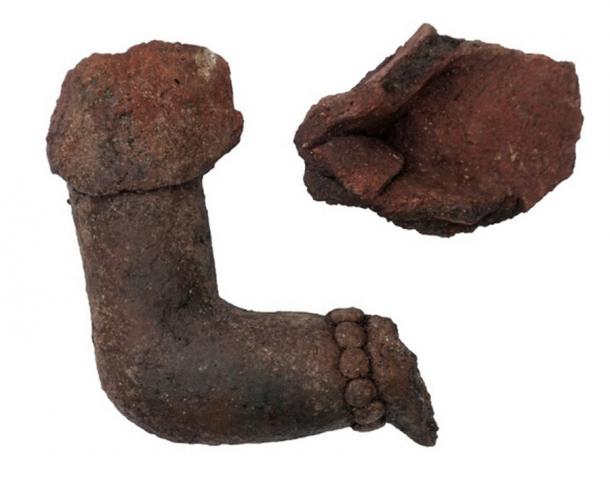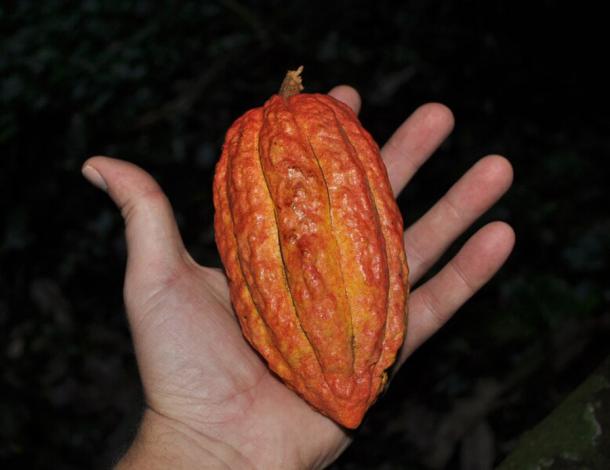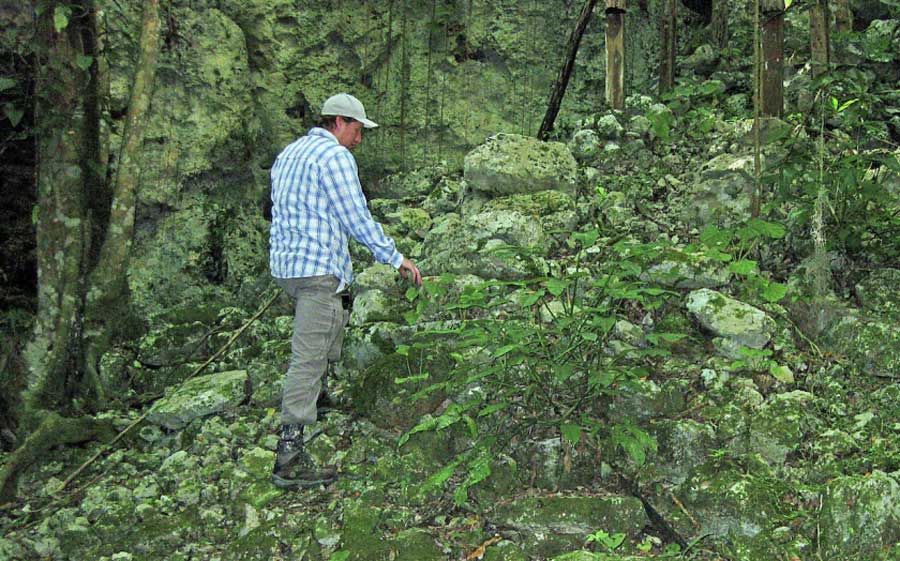Chocolate Trail: Sacred Maya Cacao Groves Found In Mexico’s Yucatan
As divine gift, money and a source of power, cacao, the plant that feeds the present-day chocolate obsession, was even more precious to the ancient Maya of the northern Yucatan. While historians have known that cacao cultivation under the Maya took place only in sacred groves that were jealously guarded by their leaders, the location of these sacred Maya cacao groves has remained a mystery. Now, a new study published in Journal of Archaeological Science Reports has discovered where in the Yucatan Peninsula these Maya cacao trees were grown.

It turns out there were once sacred Maya cacao groves in Mexico’s northern Yucatan Peninsula but in places you might not expect! This ceramic arm with bracelet is from a figurine found in one of the sinkholes in the area. (Brigham Young University)
Maya Cacao Grown In An Overly Dry Mexican Climate?
Given the dry climate of the Yucatan Peninsula, which is unsuitable for the cultivation of cacao trees, researchers have been hard put to explain how the plant could have been grown in sufficient quantities for the beans to serve as currency. The researchers from Brigham Young University, in collaboration with archaeologists from the US and Mexico, explain in great detail on the BYU news portal.
- Uncertain Origins of Ancient Cave Paintings Found in the Yucatan Peninsula
- The Maya Controversy: Startling New Evidence for an Antediluvian People who Influenced the World
The Brigham Young team, led by Professor Richard Terry and including graduate students Bryce Brown and Christopher Balzotti, realized, that the karst sinkholes dotting the peninsula provided the perfect microclimates for cacao cultivation with just the right amounts of humidity, stillness and shade. To test their hypothesis the team collected soil samples from 11 sinkholes in the Yucatan Peninsula. An analysis of these samples revealed the presence of theobromine, theophylline, and caffeine, combined biomarkers unique to cacao, in nine of them.
In addition, the archaeologists found architectural features and artifacts associated with the sacred nature of the Maya cacao groves. They found the remains of staircase ramps for ritual processions, stone carvings, altars and ceremonial offerings like jade and ceramics including ceramic cacao pods in several sinkholes.
“We looked for theobromine for several years and found cacao in some places we didn’t expect,” Terry said on the BYU news portal. “We were also amazed to see the ceremonial artifacts. My students rappelled into one of these sinkholes and said, ‘Wow! There is a structure in here!’ It was a staircase that filled one-third of the sinkhole with stone.”

A cacao pod picked from a tree growing in the sinkhole "Dzadz Ion" at Coba, Yucatan, Mexico. (Brigham Young University)
The soil was analyzed using a new method that the researchers call hot water extraction. For this, the soil samples were dried and passed through a sieve, covered with hot water, centrifuged, and passed through extraction disks. The resulting extracts were examined using mass spectrometry. The results were then compared to the results of seven control samples that had no exposure to cacao biomarkers, to ensure that the biomarkers found in the study samples were significant.
The findings of the research team once again highlight the importance of cacao cultivation for the Maya and its role in the Mesoamerican economy. A 70-mile (113-kilometer) long Maya “highway” that was a major trade route in the region ran next to hundreds of sinkholes. This indicates that those who were responsible for the highway being built also controlled cacao cultivation and trade. The evidence also points to cacao cultivation aiding the shift from a maize god to a sun god.
The research team found the arm and bracelet of a figurine attached to an incense jar and several ceramic cacao pods in a sinkhole near Coba, Mexico. They also found a few old cacao trees growing there, indicating that this sinkhole, named Dzadz Ion, was possibly a sacred cacao grove during the Late Postclassic Maya period (around 1000 to 1400 AD).
“Now we have these links between religious structures and the religious crops grown in these sinkholes,” Terry stated on the BYU news portal. “Knowing that the cacao beans were used as currency, it means the sinkholes were a place where the money could be grown and controlled. This new understanding creates a rich historical narrative of a highly charged Maya landscape with economic, political and spiritual value.”

A replica figurine of the Maya Goddess of Cacao named Ixcacao. Sculpted by Patricia Martin at Muna, Yucatan. (Brigham Young University)
The Maya and Cacao
The Maya civilization developed in the Mesoamerican cultural area, which covers a region from northern Mexico spreading southwards into Central America. Maya is a modern term used to collectively refer to the peoples inhabiting this area, although they themselves did not have a common sense of “Maya” identity. However, they shared many common cultural and regional traits and the value assigned to cacao was one of them.
- Rare 1000-Year-Old Maya Canoe Found in Yucatan Cenote
- Mexico Wants to Run a Tourist Train Through its Maya Heartland — Should It?
Cacao was a sacred food, a social process, and a sign of prestige. It was accepted as tribute by the rulers and woven into religious ritual. Cacao was used as currency (although not exclusively). Its value was such that counterfeits in the form of clay beans or cacao pods with the flesh substituted by dirt or avocado rind also circulated as counterfeit currency.
As this study has shown, the Maya were even more fixated on cacao than the modern world. It wasn’t simply a part of their diet; it was a part of religious and socio-cultural ritual, currency, and power. It literally made the Mayan world go round!
Top image: The remnants of the ancient Maya cacao groves in the Yucatan Peninsula of Mexico. Researcher Chris Balzotti climbs an ancient staircase discovered in a sinkhole near Coba, Mexico. Source: Richard Terry / Brigham Young University
By Sahir Pandey
References
Garthwaite, J. 2015. What We Know About the Earliest History of Chocolate. Available at: https://www.smithsonianmag.com/history/archaeology-chocolate-180954243/
Hollingshead, T. 2022. BYU researchers discover locations of ancient Maya sacred groves of cacao trees. Available at: https://news.byu.edu/byu-researchers-discover-locations-of-ancient-mayan-sacred-cacao-tree-groves
Terry, R. et al. 2022. Soil biomarkers of cacao tree cultivation in the sacred cacao groves of the northern Maya lowlands. Available at: https://www.sciencedirect.com/science/article/abs/pii/S2352409X21005435#f0045




















Comments
Curious why this study came out of BYU? Is there a link or reason relating to the Mormon religion?